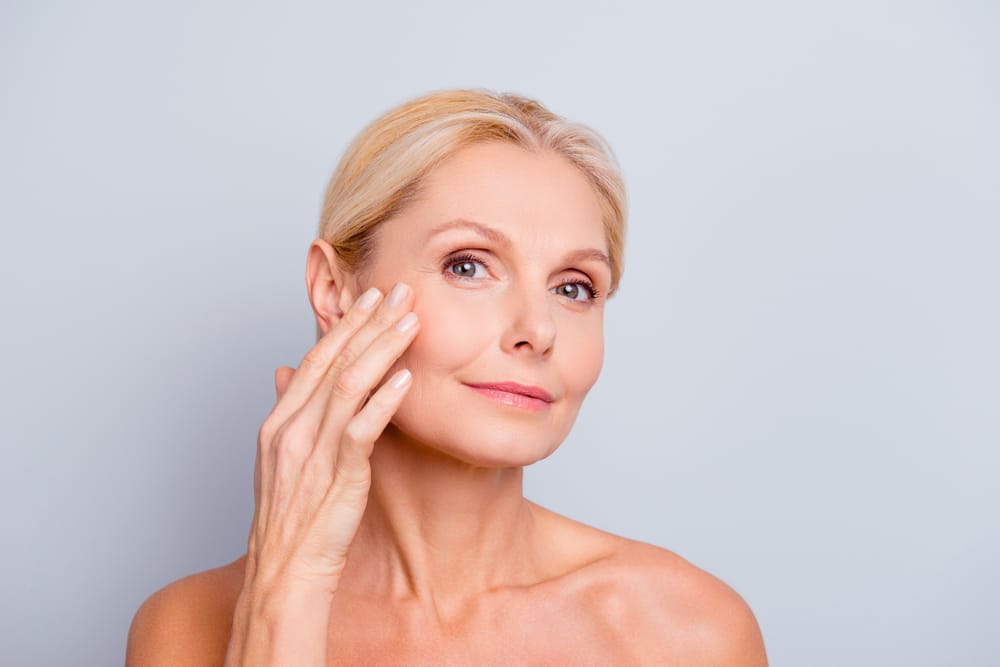Are you frustrated with the uncontrollable appearance of broken blood vessels on your face? Many of us are familiar with spider veins that tend to show up on the legs of grown women. While legs are a common location, spider veins can appear anywhere on the body.
A prime example is the tiny lines of broken blood vessels that can appear on the face. These are also spider veins. What do spider veins look like? On other parts of the body, spider veins can appear more spread out and can be blue, red, or purple in color.
What Are Spider Veins?
Spider veins are damaged blood vessels at the skin’s surface and weblike in appearance. The medical term for spider veins is telangiectasia, or you may also hear them referred to as thread veins. Regardless of what we call them, these damaged veins collect pools of blood causing them to enlarge.
What Can Cause Spider Veins on the Face?
On the face, spider veins are typically red. They are much tinier and can show up on the face in singular threads or bunches of threads that may appear as red blotches.
Inflammation
Spider veins often appear on the faces of those with an inflammatory condition called rosacea. The latter is an unpredictable condition that mainly affects the cheeks and nose. Your body’s inflammatory response can be triggered by multiple things. Take note of your skin’s reaction under the circumstances below and avoid them if trying to avoid a flare-up:
- Certain ingredients in topical products you apply to your face
- Consuming caffeine
- Consuming dairy with lactose
- Consuming hot or spicy foods
- Drinking alcohol
- Exercising and working out — or, exposure to sweat and heat
Some patients with rosacea also experience painful red bumps that resemble pimples. Ocular rosacea can cause eyes to be dry, itchy, irritated, and swollen. The skin on the nose may also thicken over time creating an enlarged and bulbous-like appearance. If you’re affected by these symptoms, it is important to consult with your dermatologist.
Sun Exposure
Sun exposure is another cause of spider veins on the face. Does that mean that everyone who goes out in the sun is at risk for spider veins? The answer is both yes and no. The answer is a partial yes because technically anyone can get spider veins with prolonged periods of sun exposure. The real answer is mainly no, because not everyone shares the same susceptibility.
You likely know one person whose skin tans very easily in the summer. You know another or you are the other person who is very fair-skinned and burns quickly. The more sensitive the skin, the more susceptible the person is to experience spider veins from exposing their face to the sun.
Luckily, there is an easy way to help prevent spider veins from exposure to UV rays. A common misconception about facial sun exposure is that sunscreen is only required on hot sunny days. If you are more susceptible to sun damage, you should wear a moisturizer that includes SPF daily to help protect you as well as avoiding scenarios with extreme heat.
Facial Trauma or Injury
Another potential factor for getting spider veins on the face is if you have any facial or head trauma or injuries. Any operation or procedure, previous or present, involving the delicate facial area would disrupt your veins and could result in the formation of spider veins.
Again, sunscreen or a daily moisturizer with SPF is always smart. Additional recommendations for prevention are to wear protective gear when necessary, such as hats, sunglasses, ski masks, goggles, full-face motorcycle helmets, etc.
How Can You Avoid Getting Spider Veins?
While there is no strategy for completely avoiding spider veins, here are some at-home prevention tips and remedies:
- Apple cider vinegar. This may reduce the appearance of spider veins on the face. Apply the vinegar to a cotton pad or ball and use it as or in place of an astringent.
- Warm water. Heat can be a trigger for spider veins. You should take warm showers, not hot. Especially for your face, wash gently with cool or warm water only.
- Essential oils. Some say that applying these to your skin can help diminish the appearance of spider veins. Dilute the essential oil with water on a cool or warm compress. Essential oils that would be good to try for vein health include rosemary essential oil to help with blood circulation and any oils with anti-inflammatory properties such as lavender.
If using essential oils, only use oils from a trusted source and company. There are no federal regulations for essential oils, so something marked as all-natural could actually include potentially irritating ingredients instead of purely derived essential oil.
Is There Treatment for Spider Veins on the Face?
Medicus Vein Care performs three different methods for spider vein removal. When it comes to the tiny spider veins located on the face, our VeinWave treatment is most likely to be recommended. It is a minimally invasive, quick, and safe procedure utilizing an ultra-fine needle to directly target the vein(s).
The gentle heat of the microwave eliminates the broken vessel with nothing more than a little redness at the injection site. Your body absorbs the damaged vein and reroutes blood through healthier vessels. There is no risk of bruising and results are typically seen in one to two visits.
Medicus Vein Care also offers sclerotherapy and cutaneous laser treatment for spider veins. Book your free consultationto see how we can help treat and prevent spider veins from coming back.





